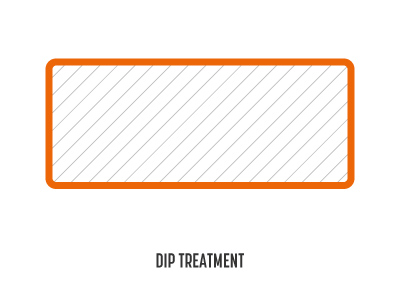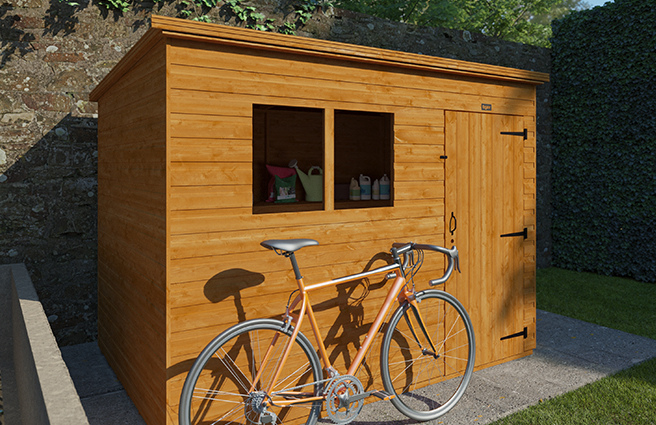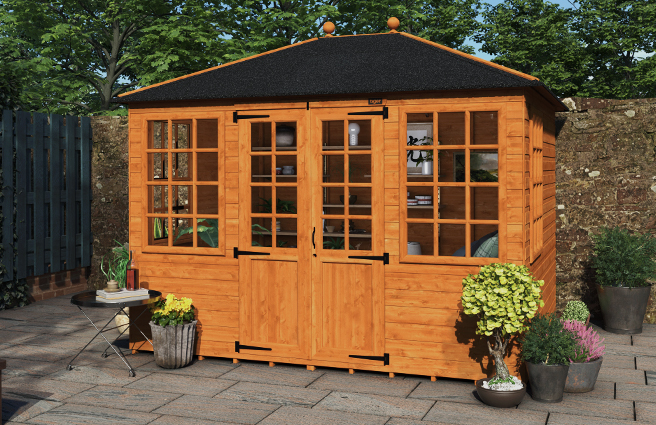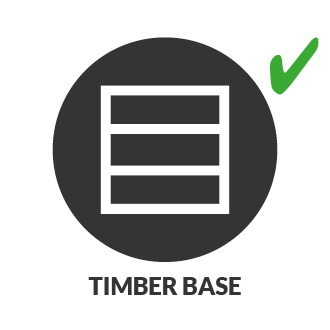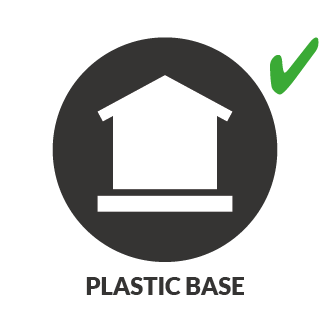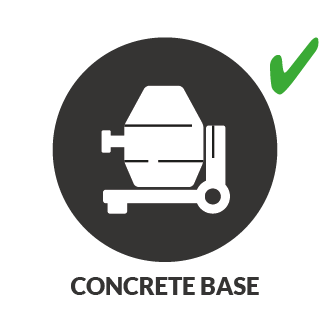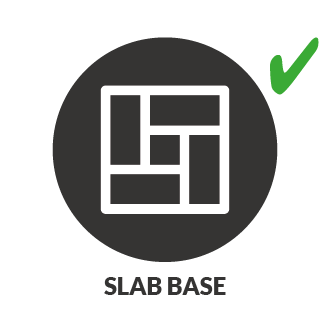Other Shed Considerations
Before you make an investment, it is important to consider a few more things to make sure you get the best value and a great fit for your space...
Shed Planning Permission
Adding a shed to your garden space is a fantastic way to increase your storage space. Garden sheds are classed as permitted developments and considered
to be outbuildings for non-residential use - no planning permission is required if the shed specification and garden location meet specific criteria.
In general, Tiger sheds are planning-friendly, but it’s always sensible to check against these points…
For example, the area of land around the original property cannot be taken up by more than 50% with your chosen building. Stay within your boundaries
by keeping the shed eaves no taller than 2.5 metres, and the max height of a pitched roof to 4 metres and that of a flat roof to 3 metres.
If your shed is within 2 metres of any boundary, the overall height including the top of the roof must be less than 2.5 metres, but if it's over 2
metres away, only the eaves height should not exceed 2.5 metres. This is just a snapshot, so don't forget to check in with your local Council before
you start any shed building plans, and you can also read our Shed Planning Permission Guide for more details.
Tiger Tip: All standard Tiger pent and apex designs meet the maximum roof height criteria of less than 2.5 meters or less.
How will my Shed be Delivered?
We provide hassle-free kerbside delivery for all our standard Tiger Sheds, either on a Pick A Day or Pick A Week service.
Unless otherwise agreed prior to delivery, of course. Our conventional garden sheds are delivered in single panels and should be unloaded by hand on
arrival by your driver. Make sure to carefully inspect your order before assembly to ensure all parts, components and fixings are present and correct.
Not sure if something is missing? No problem - just shoot us an email at customersupport@tigersheds.com
Our innovative range of TigerFlex® modular sheds and other Pick A Day products are delivered kerbside on a standard 4’x4’ pallet, which is wrapped and packed for
convenient storage. So now all you need to do is unpack and build it when you need it (there’s even a helpful video to show you how to do that if you need it).
How do I Install my Shed?
You shed will need to be installed on a solid, even base. The most popular materials for this base are environmentally friendly Fastfit plastic grids, paving
flags or concrete, and it should be no smaller than the base of your shed. A spirit level is recommended to make sure the base is as even as possible. Get it
right from the start to make sure you get the most out of your shed. Don’t forget to check out our Build a Base Guide.
While sheds are quite straight-forward to erect, it can seem a daunting task for those of us with little or no DIY knowledge. Some companies require all sheds to
be self-assembled, while some will offer installation as an additional extra (Tiger can also offer this service depending on your postcode). If you purchase installation,
please note you would usually still need to supply a firm and level base, and you may have to take the shed from where it has been delivered to where it is being installed.
Ensure access is clear around the base, allowing adequate space to erect the building and for ongoing shed maintenance.
Where should I position my Shed?
To get the most out of your shed, careful planning and choosing the right spot is key. Get your shed built in the ideal spot and you will have the perfect outdoor setup!
It's crucial to be mindful of the placement of your shed, taking into consideration legal requirements such as planning permission.
Be sure to think about the size of your garden, any nearby fences or walls, what position you want the door and windows to be in, and whether any overhanging branches could
come into contact with the shed and cause potential damage. Some companies can change the door position of a shed if required, so be sure to check this if you need the door
re-positioned to provide better access. You should also consider if you want the door hinged on the left or the right. Some shed retailers offer a pre-hung door, while some
will provide the door separately to be hung on assembly.
Moving a garden shed after installation can be a tricky task, so before you order make sure you plan and determine the best spot in your garden. That way, you can avoid any
uncomfortable surprises and use your new shed to its fullest potential. And don't forget you can always customise your wooden Tiger Shed to make sure it fits perfectly in your
garden, for your needs.
Here are some key considerations to keep in mind for finding your perfect shed spot:
Garden size - Having the right spot for your shed is important - it could make all the difference in how it looks and works. Make sure you have enough space around the
perimeter for a path to the shed and for easy maintenance.
Proximity to boundaries - Make sure you don't get on your neighbour's nerves – and keep in mind that legally, a shed should not be placed within two metres of a dwelling (house)
boundary if it is over 2.5m tall.
Room to move around – It is recommended that there be an air corridor around the building of at least 18 inches, so that air can circulate without releasing humidity.
Having space around the shed also makes it a lot easier to maintain and decorate and keeps foliage and branches from touching and passing moisture.
Proximity to house - It's not a good idea to place your shed too close to shrubs. The same holds true for installing it up to close against the house. This will have impact
on both the accessibility and your capacity to make repairs.
Exposure to the elements - It’s important to take care of your shed in the great British weather - try and avoid positioning it in an open space where turbulent winds and rain could affect
its condition! For added protection from the elements, why not place it in a more sheltered area like the corner of your garden. Keep in mind that over-exposure to intense direct sunlight
for longer periods can make the interior less comfortable and potentially cause the exterior paint and roof to age a bit quicker than normal. On the contrary, a spot in a shady location may
not be ideal in the winter, as it could lead to your shed being extra cold.
Tiger Tip: Keep your shed in use all year round by installing lights and a heating system.
Security - If you’re using your shed to store valuables such as motorcycles or expensive equipment, you may wish to consider security upgrades. These could be items such as anti-vandal
screws, a security bar across the door, an internal security bike post, and additional locks and padlocks. Check what items the shed comes with as standard – does the shed come with a lock?
View and aesthetics – With quality design and installation, adding a shed can be the perfect way to spruce up your garden or backyard and raise your home's value. Blending it with the surroundings or
making it an eye-catching centrepiece - the choice is yours.
Tiger Tip: We recommend keeping your shed away from the trees and bushes. Branches could scratch up the felt and leaves could trap water, leading to potential damage to your timber. So, make sure to install
it in an open area - your shed will thank you for it!











